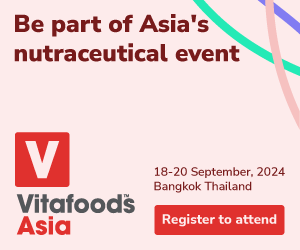Provenance matters as consumers care how pure or pristine the environment in which algae, or other natural products that we consume, are grown. They educate themselves as to provenance. For example, Chinese consumers prefer products from Australia or New Zealand because they trust the provenance.
Now, a Chilean company is hoping to carry their message of provenance across to Asian buyers of nutraceuticals at Vitafoods Asia 2019. The Atacama Desert in Chile is a unique and privileged place which has the optimal natural conditions to culture Haematococcus pluvialis, the only true source of natural astaxanthin.
Atacama Bio Natural Products, who produce astaxanthin products from Haematococcus pluvialis, will launch a new product, NatAxtin at Vitafoods Asia 2019. NatAxtin is microalgae that has been grown through biomimicry.
It is technologically demanding to produce a quality Astaxanthin product at an industrial scale over time, because haematococcus pluvialis is a naturally-occurring organism that thrives in ponds and in places that have no environmental contamination. Additionally, such algae only start producing astaxanthin under particular stress conditions, mainly intense sunlight.
Taking advantage of Chile’s high solar radiation, pristine and clear skies, and pure underground water from the Andes
To manufacture astaxanthin, the culturing process has to imitate intense light conditions either through access to such conditions - taking advantage of Chile’s high solar radiation, pristine and clear skies, and pure underground water from the Andes - or by fabricating them using artificial light, or by encapsulating the algae in tubes.
The origin of Astaxanthin matters. The more natural the production process, the less intervention required, yields a product that is closer to that which nature produces.
Atacama Bio Natural Products use a raceway photobioreactors production system, which takes advantage of the geographical and climatological conditions in the Atacama Desert. The method is sustainable, consumes little energy (as it uses solar energy) and closely resembles the way that nature intended for Haematococcus pluvialis to grow. The entire production process also has less ecological impact.
Algae create biomass by absorbing carbon dioxide directly from the atmosphere while delivering oxygen, thus contributing to a lesser carbon footprint. The facilities in which the algae are grown are fed by pure underground water that filters directly from the peaks of the Andes Mountain Range. This production process creates an essentially natural Astaxanthin product.
Because Atacama Bio Natural Products take advantage of their topological conditions, it lowers the cost of production, a benefit that is then transferred to consumers.
To learn more, visit Atacama Bio Natural Products at Stand D34 at the Vitafoods Asia 2019 exhibition between 25-26 September 2019 in Singapore.




